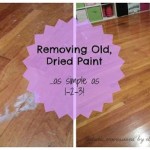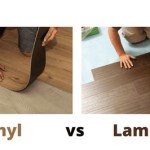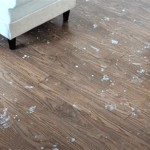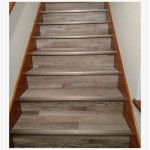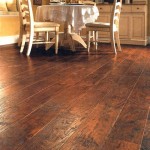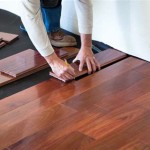Is Vinyl Plank Flooring Safe For Stairs And Landing?
Vinyl plank flooring has gained immense popularity as a versatile and cost-effective flooring solution for various areas within a home. Its durability, water resistance, and aesthetic appeal make it an attractive option for homeowners looking to upgrade their spaces. However, when considering the use of vinyl plank flooring, a critical question arises: is it safe and suitable for installation on stairs and landings? The answer requires a nuanced understanding of the factors influencing its safety and performance in these specific areas.
Stairs and landings present unique challenges compared to other flooring surfaces. They are subjected to high foot traffic, potential impacts, and require a secure and slip-resistant surface to ensure the safety of occupants. Evaluating the suitability of vinyl plank flooring for these areas necessitates a careful assessment of its material properties, installation methods, and adherence to safety standards.
Material Properties and Slip Resistance
The safety of any flooring material on stairs and landings hinges significantly on its slip resistance. Vinyl plank flooring is manufactured with varying surface textures and finishes, some of which offer better traction than others. It is crucial to select vinyl planks specifically designed with a textured surface or an enhanced slip-resistant coating for stair applications. These features help increase the coefficient of friction, reducing the risk of slips and falls. The coefficient of friction (COF) is a measure of the resistance of one surface against another when in contact. A higher COF indicates greater slip resistance.
When choosing vinyl plank flooring for stairs, it is advisable to review the manufacturer's specifications and product documentation to determine the COF rating. Building codes and safety standards often specify minimum COF requirements for stair surfaces. Exceeding these minimums is paramount for enhanced safety. Furthermore, it is essential to consider how the COF might change over time due to wear and tear. Regular cleaning and maintenance can help preserve the slip resistance of the vinyl plank surface.
Beyond slip resistance, the durability of the vinyl plank itself plays a crucial role in safety. Stairs endure considerable wear and tear, and a flooring material that readily dents, scratches, or breaks can compromise its safety. High-quality vinyl plank flooring, particularly those with a thick wear layer, are more resistant to damage and can better withstand the demands of stair applications. The wear layer is the top surface of the vinyl plank, designed to protect the underlying layers from abrasion and impact. A thicker wear layer generally translates to a longer lifespan and improved resistance to wear.
The dimensional stability of vinyl plank flooring is also important. Stairs can be subject to temperature and humidity fluctuations, which can cause some flooring materials to expand or contract. This movement can lead to gaps, warping, or other issues that can create tripping hazards. Vinyl plank flooring with a stable core construction is less prone to dimensional changes and is therefore better suited for stair applications. Engineered vinyl planks, often incorporating a rigid core, are designed to minimize expansion and contraction.
Proper Installation Techniques
Even the most slip-resistant and durable vinyl plank flooring becomes unsafe if it is not installed correctly. Meticulous adherence to manufacturer's instructions and established best practices is essential for a safe and long-lasting installation on stairs and landings. Proper subfloor preparation is paramount. The subfloor must be clean, level, and structurally sound. Any imperfections, such as cracks or unevenness, must be addressed before installing the vinyl plank flooring. Preparing the subfloor properly ensures that the vinyl planks are securely bonded and that the surface is stable and even.
Using appropriate adhesives is crucial. The adhesive must be compatible with both the vinyl plank flooring and the subfloor material. The adhesive should be applied evenly and in the correct amount, as specified by the manufacturer. Improper adhesion can lead to loose planks, which can create tripping hazards. For stairs, using construction adhesive in addition to standard flooring adhesive is often recommended to provide extra bonding strength.
The installation of stair treads and risers requires particular attention to detail. Stair treads are the horizontal part of the step where one places their foot, while risers are the vertical part between each tread. Many manufacturers offer specialized vinyl plank treads designed to seamlessly integrate with the flooring. These treads typically have a rounded or bullnose edge for improved safety and aesthetics. Alternatively, vinyl planks can be cut and shaped to fit the treads, but this requires precise measurements and cutting to ensure a secure and visually appealing finish.
The use of stair nosing is highly recommended when installing vinyl plank flooring on stairs. Stair nosing is a piece of material that covers the edge of the stair tread, providing a finished look and enhancing safety by improving visibility and adding extra grip. Stair nosing is available in various materials, including vinyl, aluminum, and wood, and should be chosen to complement the vinyl plank flooring. It should be securely attached to the stair tread using adhesive and mechanical fasteners, such as screws or nails.
Paying close attention to transitions is also important. Transitions are the areas where the vinyl plank flooring meets other flooring materials or architectural features, such as doorways or walls. To prevent tripping hazards, transitions should be smooth and flush. Transition strips or moldings can be used to create a seamless transition between different flooring surfaces. These strips are available in various profiles and materials to suit different applications.
Adherence to Safety Standards and Building Codes
Building codes and safety standards are in place to ensure the safety of occupants in buildings. These codes often specify minimum requirements for flooring materials used on stairs and landings, including slip resistance, fire resistance, and structural integrity. It is vital to consult local building codes and regulations before installing vinyl plank flooring on stairs to ensure compliance. Neglecting to adhere to these codes can result in costly rework or even legal liabilities.
Many jurisdictions require a building permit for flooring renovations, particularly those involving structural changes or modifications to staircases. Obtaining a building permit ensures that the project is inspected by a qualified professional who can verify that the installation meets all applicable codes and standards. This provides an added layer of assurance for the safety and quality of the installation.
In addition to building codes, voluntary safety standards, such as those developed by the American Society for Testing and Materials (ASTM), provide guidance on flooring performance and safety. ASTM standards specify testing methods and performance criteria for various flooring characteristics, including slip resistance, fire resistance, and wear resistance. Selecting vinyl plank flooring that meets or exceeds relevant ASTM standards can help ensure a safe and durable installation on stairs and landings.
The Americans with Disabilities Act (ADA) sets accessibility requirements for public accommodations and commercial facilities. The ADA includes specific guidelines for stair design and construction, including requirements for tread depth, riser height, and slip resistance. While the ADA primarily applies to commercial spaces, its principles can be valuable in residential settings as well, particularly for homeowners who have family members or visitors with mobility limitations. Choosing vinyl plank flooring that meets ADA guidelines can help create a safer and more accessible environment for everyone.
Regular inspections and maintenance are essential for maintaining the safety of vinyl plank flooring on stairs and landings. Inspect the flooring regularly for signs of wear and tear, such as loose planks, damaged edges, or worn surfaces. Promptly address any issues to prevent them from becoming safety hazards. Regular cleaning can also help maintain the slip resistance of the flooring. Use a pH-neutral cleaner specifically designed for vinyl plank flooring and avoid using harsh chemicals or abrasive cleaners, which can damage the surface.

How To Install Vinyl Plank Flooring On Stairs In 6 Steps

How To Install Vinyl Plank Flooring On Stairs In 6 Steps

How To Install Vinyl Plank Flooring On Stairs In 6 Steps

How To Install Vinyl Flooring On Stairs Open Sided Staircase Nosing Tread And Riser Stepup

How To Install Vinyl Plank Flooring On Stairs In 6 Steps

Tips For Choosing A Floor Color Vinyl Plank Flooring

How To Install Vinyl Plank Flooring On Stairs

Diy Stair Nosing Options For Lvp Flooring

Installing Hard Surface Stair Treads Basic Tips And Techniques Floor Trends Installation

How To Install Vinyl Flooring On Stairs Open Sided Staircase Nosing Tread And Riser Stepup
See Also

